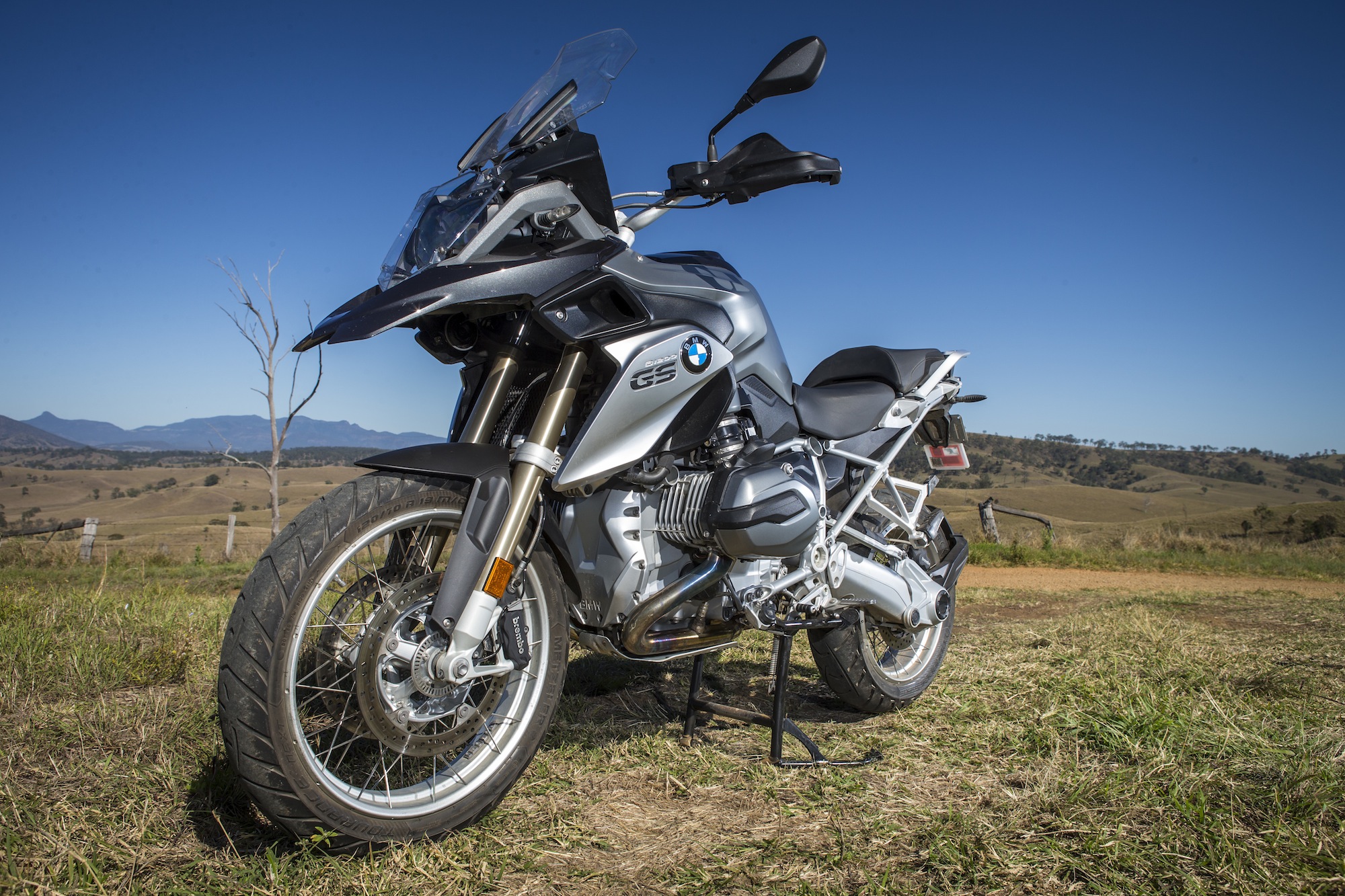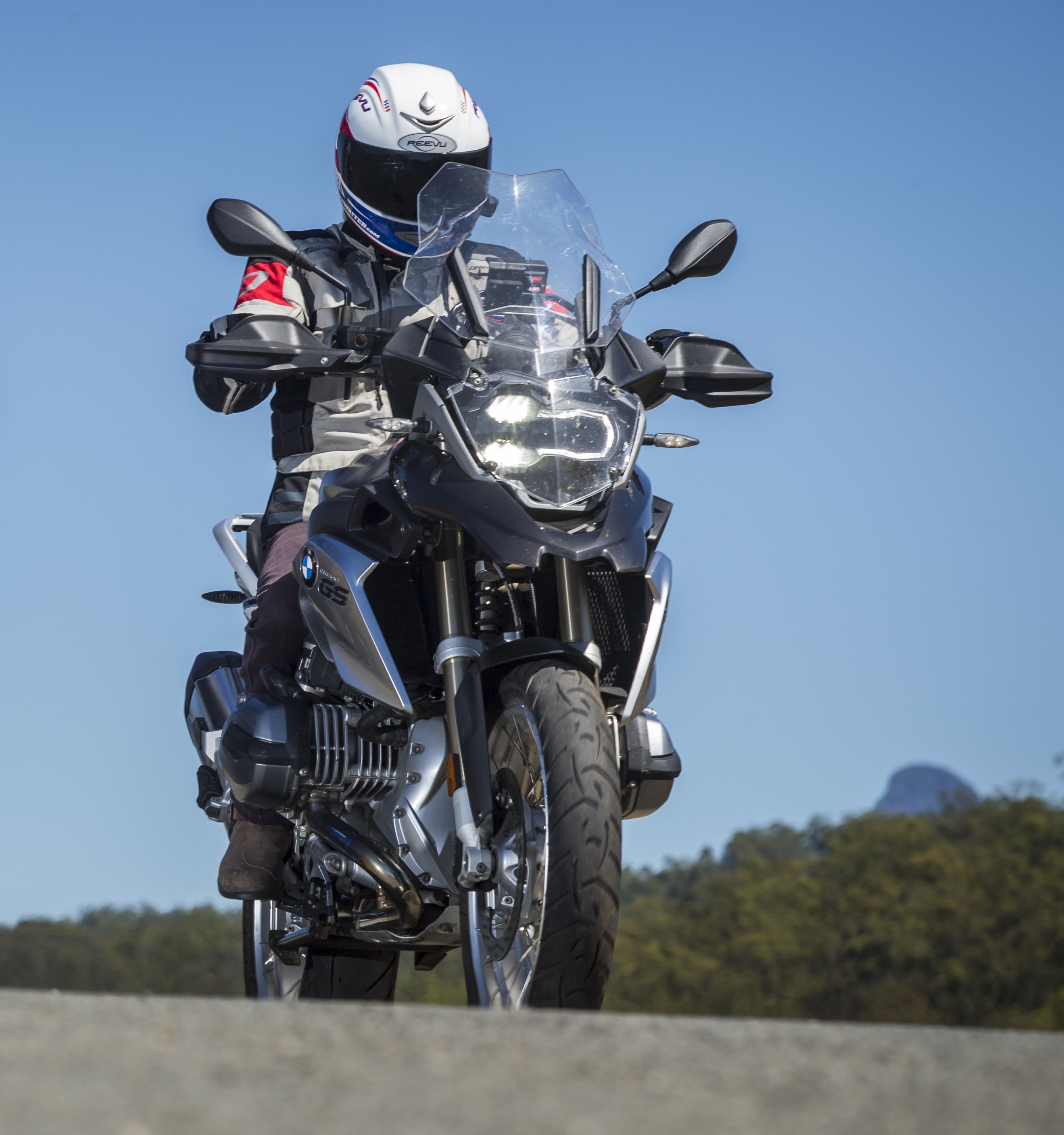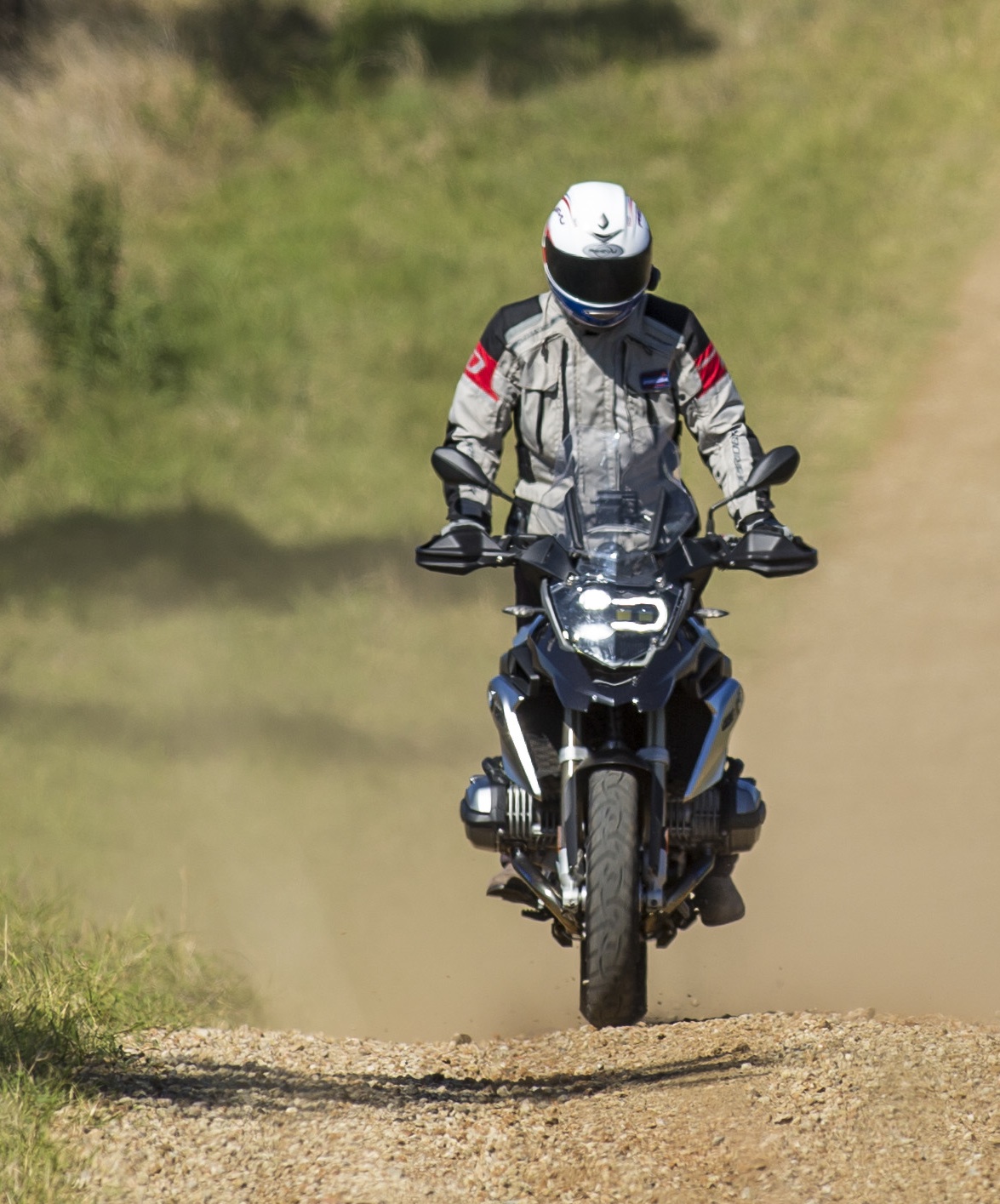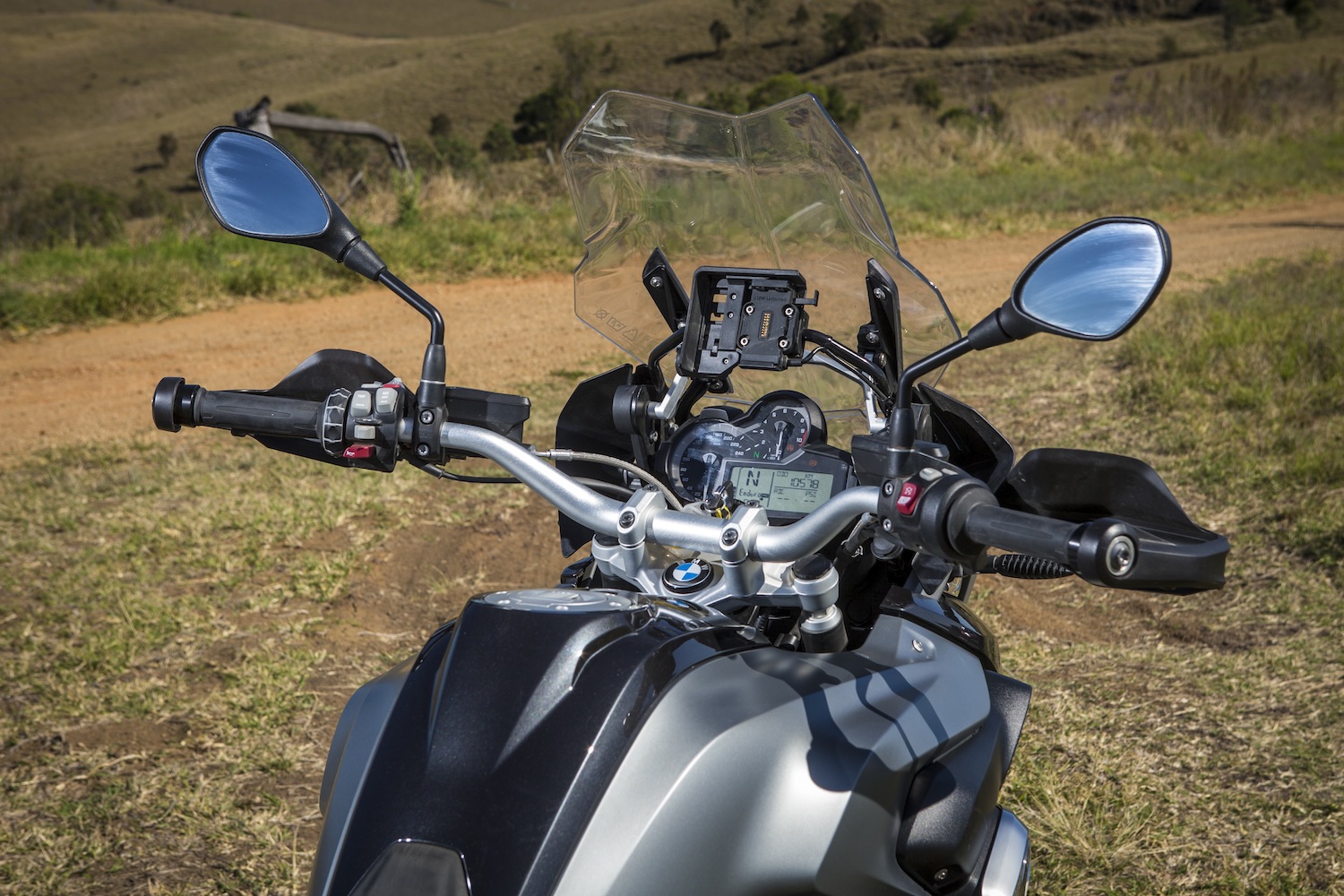BMW has widened the gap between the R 1200 GS and GS Adventure.
The GS is now a slightly more road-oriented bike, while the coming Adventure is going to be more hardcore off-road. Read my story here.
BMW has confronted coming stringent emissions laws by water-cooling its famous boxer engine, now affectionately known as the “wasser boxer” or water boxer.
It’s still largely air-cooled with water only cooling the heads which are the hottest part of the engine. The barrels are still air-cooled and retain their traditional fins.
The result is not only a cleaner engine, but also more economical and powerful.
The new GS also gets a lot more rider aid options with systems that link the semi-active suspension, engine mode, throttle, ABS and traction control into five easily selectable modes including an Enduro Pro mode that switches ABS off on the back and leaves it on at the front.
All very clever stuff indeed, but there are some less technical changes that will also delight GS fans.
They include a windscreen that has far less buffeting and now has a knob so you can quickly raise and lower the screen on the fly. Very low tech for the Germans, but lighter and cheaper than an electronic windscreen.
Other changes and options include the world’s first motorcycle with LED main headlight and LED daytime running lights, cruise control, a narrower seat at the front, more seat height choices, and the muffler and shaft switched around so you don’t burn yourself on the exhaust when mounting.
The base model comes in at $21,250, but this test bike has the full electronics package of stability control, electronic suspension, LED headlights, on-board computer pro, wiring for GPS and daytime riding light ($3150), wire wheels ($580), cruise ($500) and alarm ($505) bringing it up to $25,985.
It comes with an easy to use cruise control and heated grips as standard.
Let’s face it, the Germans have never been fashion-conscious. The previous GS was a brutish affair, but at least with a noble stature.
In an effort to modernise the look, the style gurus at BMW have created a very disjointed mish-mash of panel shapes that make it appear like an abstract Picasso painting.
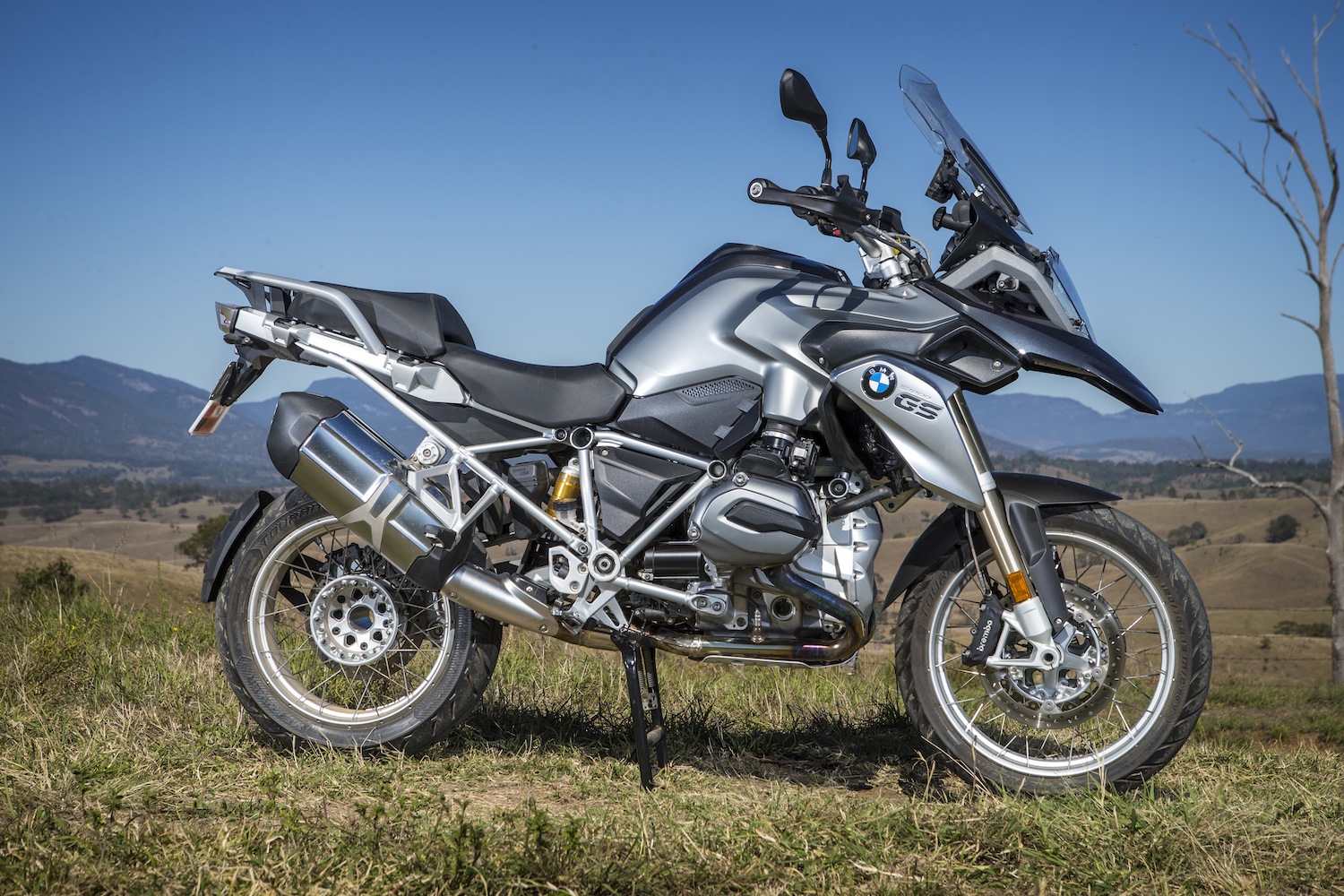
Yet BMW has tidied up a lot of the junk hanging off the airhead boxer so you don’t bang your shins on them when getting on and off or walking the bike around.
And by swapping the drive shaft and muffler you now get a clearer view of the rear wheel when the bike is on its sidestand.
The BMW muffler now has a narrower profile and has a rather thin and raspy soundtrack for such a big, brawny bike.
Mufflers and panels are quite vulnerable, even if dropped in the driveway at home.
Yes, it has plastic handguards, but the panels and, in particular the boxer heads, are exposed to damage in even the smallest of “offs”. However, BMW has added a thick tank pard to avoid scratching.
BMW has moved its kicker for the sidestand from behind the footpeg to in front of it where it is difficult to access with thick touring boots.
Water cooling the iconic boxer has resulted in a power boost from 79kW to 92kW at around the same revs while torque has marginally risen from 120-125Nm at an extra 500 revolutions.
Touring feels natural and stress-free as the Beemer settles into a gentle rhythm, its gear indicator on the instrument screen even suggesting with an arrow indicator to shift up a gear … usually much earlier than you would imagine.
It dares you to ride the tsunami of available torque, quick-shift to sixth and run it like an automatic.
Come up behind a truck and trailer or a conga line of cars and simply roll on the throttle for safe and swift passing.
Roll-on acceleration from 100km/h to 120km/h takes three seconds in sixth.
Gears are fairly tall which suits touring abilities and the box feels clunky and purposeful, rather than slick. The engine doesn’t require slick changes.
On test, it returned economy of 5.1L/100km, increasing only to 5.4 with a pillion and luggage and running as low as 4.8.
Surprisingly, the water-cooled engine seems to run hotter than its air-cooled predecessor, pouring hot air over your lower right leg. It’s not uncomfortable except on a hot day if you are wearing short boots.
It also comes as a surprise that the water-cooled Beemer has more mechanical noise than its air-cooled forebear. It clatters with noisy valve lift at idle and even on the run.
The balanced boxer and shaft drive are so smooth these days a friend who rides a KTM was amazed at the lack of shaft lash and boxer vibration.
With a plethora of engine modes available, there is a mode for every occasion.
For most duties I found the “Dyna” mode the best as it adapts to the changing conditions of our roads.
Logical thinking dictated that Enduro Pro would be the better option than Enduro, but I was proved wrong.
It was almost unrideable on road rubber in Enduro Pro. So if the cross-country tour does require some dirt and gravel, just select Enduro and carry on.
However, Enduro Pro has the handy off-road feature of switching the ABS off at the back and leaving it on the front. It should be included on the Enduro mode as well.
Back on the tar, the Beemer feels composed, inspiring confidence to throw it into a corner.
And throw you must as the wider bars and slower steering require a fair amount of purposeful effort.
However, with that new wider-section front tyre, there is rail-like grip.
This is even more evident when you have a pillion. This usually lightens the front steering feel, even when you adjust for the load. Not so with the 120mm tyre (previously 110mm).
Strangely, there were some occasions when the front felt quite flighty, especially under acceleration while you still had some turn on the bars. We suspect it has something to do with the Metzler Tourance tyres.
Even before throwing a leg over the seat, lifting the bike off the sidestand it feels lighter than before, despite weighing 9kg extra.
Seating position is very comfortable and you can vary the seat height or get optional higher and lower seats.
When it comes to standing up for gravel roads, the BMW feels narrower than before so you don’t ride with bow legs and you can feel the bike better with your knees.
The handlebars are a long way away on the GS, but you can roll them back if they are too uncomfortable.
Roll the bars forward and their big bend brings them up higher and they are at just the right position without the need for a raiser.
It’s a shame they can’t think of some simple and safe quick-release mechanical system to roll the bars back and forward like they’ve done with the screen adjuster knob.
Once underway, the first thing you notice on the new GS is how well the aero engineers have developed the windscreen.
Not only is it adjustable for height and slope, but in almost any position it has far less buffeting than its predecessor.
The BMW’s radiator shrouds and boxer heads also provide good weather protection.
BMW pillion comfort is pretty good with a generous 550mm reach to the footpegs, an ample 300x300mm pillion pad with deep foam stuffing and wide grips that are just a little bit close to the seat.
The electronic suspension adjustment also adds to pillion comfort with the “comfort” and “soft” damping settings. However, I found the Beemer worked better in “normal” damping mode as “comfort” was too bouncy with a pillion.
As for luggage, there are optional road panniers that go straight on without the need for extra mounts.
Shame it doesn’t have a top box that also fits on the supplied racks. Instead, you have to fork out more of your hard-earned dollar for another rack.
Off-road luggage requires an extra rack.
Water cooling has been a major challenge for this bike and they seem to have met that challenge while also improving the bike in so many other ways.
The new “wasser boxer” has certainly raised the bar yet again for adventure touring bikes.
2013 BMW R 1200 GS tech specs
- Price: $21,250 ($25,985 as tested)
- Engine: 1170cc boxer twin
- Bore x stroke: 101 x 73mm
- Power: 92kW @ 7700rpm
- Torque: 125Nm @ 6500rpm
- Compression: 12.5:1
- Fuel: Premium unleaded (95 RON)
- Transmission: 6-speed, anti-hopping wet clutch, cardan shaft
- Chassis: Tubular steel bridge frame, engine self-supporting
- Suspension: Telelever front, 190mm travel; EVO Paralever rear 200mm travel
- Brakes: Hydraulic twin 305mm discs; 276mm disc; ABS
- Wheels: 3 x 1.9”, 4.5 x 17” alloys
- Tyres: 120/70 R19; 170/60 R17
- Wheelbase: 1507mm
- Length: 2207mm
- Width: 953mm
- Seat: 850/870
- Wet weight: 238kg
- Fuel: 20L tank
- Economy: 4.1L/100km @ 90km/h
- 0-100km/h: 3.6s



